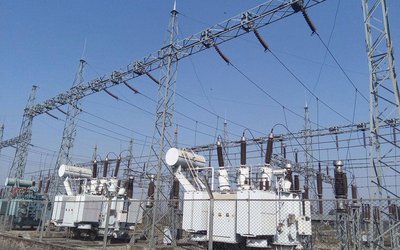Each year, on January 16 we celebrate Earthquake Safety Day in Nepal. A day to recognize the collective efforts of government, UN and partners in reducing our vulnerability to earthquake and also a day to remember those who have lost their lives in past earthquakes. It is important today to remind ourselves of the risk we continue to face and of the work required to ensure that Nepal is prepared when the next earthquake strikes.
“While floods and landslide happen every year affecting lives and livelihoods, a large earthquake will take a sudden and devastating toll in Nepal. Kathmandu Valley, the seat of the Government, is the most at-risk city in the world to a large earthquake. When that earthquake does strike, in less than one minute everything as we know it will change. We will all lose people we love, and Nepal’s hard-won development goals will be lost. I have witnessed such devastation in Pakistan, Iran, Afghanistan and the Tsunami in Asia. I know the costs and the challenges to recovery. I believe the situation in Kathmandu Valley when the large earthquake does occur may be one of the worst humanitarian disasters the world has ever faced.
Recognising the magnitude of the threat, the Government of Nepal and its partners have made disaster risk management a priority. Through the Nepal Risk Reduction Consortium, we are coordinating efforts to take measures to minimise risk and prepare for the response across the country. The NRRC is unique in working across Government and the international community. In Kathmandu Valley we have to address the risk that has already been created while in urban and rural settlements we hope to prevent the current growing risk.
Before the disaster occurs, there is much that can be done to limit its impact. In Nepal, perhaps the most important action that can be taken is the proper enforcement of and compliance with building codes. It is true that ‘earthquakes do not kill people, buildings kill people’. It is the haphazard construction of buildings and other structures that put people at risk. In Kathmandu, where 6,000 new buildings are being constructed each year, we must change our attitudes to construction and ensure these buildings are safe or yet more people will die unnecessarily. Ensuring all buildings are code compliant and earthquake safe will require a collective effort from the Government of Nepal, private sector and the people.
The Government of Nepal needs to strengthen systems and capacity to monitor and enforce building codes. This work is happening with support from the international community. In Kathmandu and Lalitpur municipalities, a new automated building permit system will support efforts to monitor building code implementation by ensuring that the process is tracked step by step. The Government and partners are also providing trainings to masons and engineers to strengthen capacity to implement the building codes. We need to scale up this work and ensure that every house owner has access to properly trained technicians.
Building codes are not solely a government responsibility. The private sector, such as contractors or materials suppliers, need to understand their responsibility in building a stronger Nepal. Without the active engagement and leadership of the construction sector and their commitment to build safely, we cannot have the change we need.
Most importantly the people of Nepal must be better informed so that they can play their part. Building a safer home is a smart long term investment that will protect your family and your valuables from an earthquake. It is not a choice. It is essential.
The building code issue is complex and requires awareness as well as commitment from all of us. While we have seen progress on this issue over the past five years, we are still not at a point where we can be confident that all new buildings are being constructed for earthquake safety. It must be a national priority to ensure that all buildings are safe.
While we work to ensure fewer lives are lost, there is nothing we can do to prevent an earthquake from happening. Immediately after an earthquake strikes, we have a limited amount of time to search and rescue those in need. Usually after a major earthquake, international search and rescue response teams arrive and begin work. In Nepal, we may not have that luxury as the only international airport will not be functional; international support may not arrive for days. This means we must be prepared to help ourselves.
Much has already been done with regard to strengthening search and rescue in Nepal. At the community level, trainings have been provided to people in basic search and rescue techniques. This work is critical, as immediately after the earthquake, it will be members of the community who will respond first. However these teams will not be able to move heavy rubble or enter into collapsed buildings in search of the wounded. We need to increase our ability to rescue those trapped in this way.
This is now happening. In 2013, the Government took a great step forward by approving the National Strategy for Urban Search and Rescue, which outlines the Government’s vision for search and rescue in Nepal involving the military and armed police. This strategy is the foundation that increased search and rescue capacity will be built on and it must be a priority for action in 2014.
While I am encouraged by the work being done, we know much more is needed. On this Earthquake Safety Day, while the risk of a large earthquake may seem overwhelming, many effective and practical efforts are underway to reduce risk and lives lost. The threat we face is so great, that only a collective effort of Government, private sector and the public can make a difference at the scale that it requires. On Earthquake Safety Day I commit the UN to step up its efforts in this regard to the maximum and would expect you to make a similar commitment if we are going to save lives together. The author is UN Resident Coordinator in Nepal . Statement delivered at Earthquake Safety Day in January 16, 2015. We republish it because it finds relevant to present context.

















